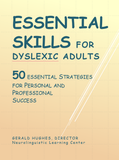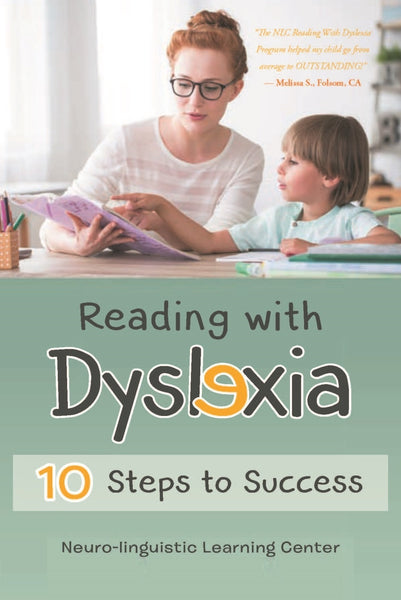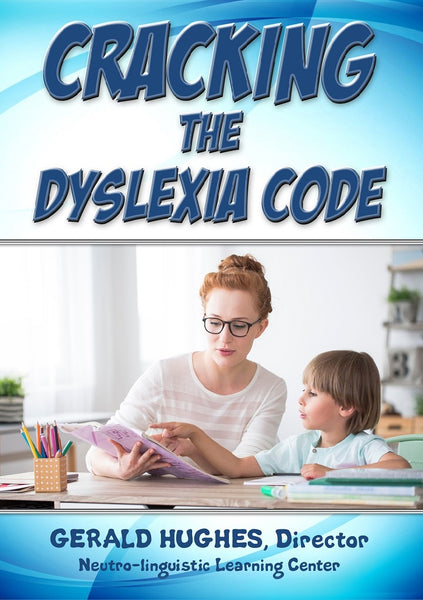Your cart is currently empty.
INTRODUCTION
As a group, Dyslexic Adults have profiles for perceiving and processing sensory information that are different from neurotypical Adults.
It follows that many Dyslexic Adults have different strengths and weaknesses and require different strategies to succeed personally and professionally.
Unfortunately, there is a startling lack of services and support for Dyslexic Adults.
Further complicating the issue is that in a typical school, work, or social environment with a heterogeneous population, it is doubtful that Dyslexic Adults will receive sufficient guidance and understanding.
Neither are they likely to be taught skills and strategies appropriate to their natural abilities.
Experience has shown us that the lack of appropriate skills and strategies is the source of many Dyslexic Adult struggles.
Even more than temporary accommodations, most struggles are resolved and replaced with success when Dyslexic-appropriate skills and strategies are provided.
Essential Skills FOR Dyslexic ADULTS is intended to provide many of those critical skills and strategies and so provide relief from many of the struggles commonly experienced by many Dyslexic Adults.
It is important to note that Essential Skills FOR Dyslexic ADULTS is NOT a medical text. There is NOTHING in this text intended to diagnose, fix, or cure any medical issue.
There is nothing within this text that would take the place of competent medical advice. If you suspect a medical, psychological, or neurological issue, you should consult a licensed medical professional.
Essential Skills FOR Dyslexic ADULTS has one purpose: to provide struggling Adults with the basic skills to make their personal and professional lives easier, faster, and more enjoyable.
“Unlike ABA, CBT and other behavior-based therapies, these essential skills are designed to help dyslexic Adults achieve their personal and professional goals—NOT by masking or managing their behavior but by becoming fully self-expressed human beings.” -- Gerald Hughes
Dyslexia and Reading Struggles
Before we go into specific skills and strategies, I think it’s important that we briefly review the four neurological issues underlying Dyslexia and most reading struggles.
Visual Perception (Dyseidetic Dyslexia):
Visual (Dyseidetic) Dyslexia typically occurs when a person perceives and processes 2-dimensional objects (symbols, letters, and numbers) AS IF they were 3-dimensional objects.
Typical symptoms of Visual Dyslexia are difficulty learning the alphabet, flipping letters, mixing up everyday words, difficulty memorizing words, difficulty recognizing familiar words, and poor handwriting.
Auditory Perception (Dysphonetic Dyslexia):
Auditory (Dysphonetic) Dyslexia is typically associated with Auditory Processing Disorder (APD) and occurs when a person uses Pattern Recognition rather than Decoding as their dominant strategy for processing auditory information. In other words, the child is processing human speech AS IF it were typical sounds found in nature.
Typical symptoms of Auditory Dyslexia are developmentally delayed speech, difficulty identifying specific sounds, difficulty following instructions, omitting certain sounds when reading, speaking, and/or spelling.
Lack of Focus and Attention (Executive Dysfunction):
When a person’s Autonomic Nervous System (ANS) is “sympathetic dominant”, that person may experience chronic stress and may struggle to maintain focus and attention, especially with respect to auditory information, both written and verbal.
Typical symptoms of stress are a lack of retention when reading, fidgeting, mind wandering while reading, difficulty memorizing, and/or working memory issues.
Sensory Integration (bilateral Hemispheric Integration):
When the processing of Visual and Auditory information in the brain is not properly integrated or out of balance, many persons will experience struggles with reading.
Typical symptoms are lack of comprehension, eye-tracking issues, frequently loosing place when reading, words jiggling or jumping off the page. And because the meaning of the word and the word, itself, are typically stored in different parts of the brain, memorization of spelling and vocabulary words can be difficult.
It is important to understand that a person may exhibit any or all of these underlying issues. And it is this complexity underlying most person's reading struggles that real significant progress can be difficult to achieve.
The problem for many Dyslexics is that most programs only address one or two of these underlying issues. And while almost any concerted effort with result in some progress, many Dyslexic children will continue to struggle on one or more areas.
If any of these four underlying issues are not fully addressed, it is likely that the person's reading struggles will continue.
Even with sustained intervention to address one or two of the issues, for example, Visual Perception and Auditory Perception
Dyslexia is NOT who you are!
Dyslexia is something you do.
It is likely that just about everything you have ever heard or read about Dyslexia was either written by well-intentioned non-Dyslexics or by Dyslexics who continue to struggle with reading.
As we see in this graphic, we see the flow of sensory information as a cycle. Just as we are effected by our results (Feedback), our perception of these results is effected by a variety of factors, including our current emotional state (Dominant Feeling), how we perceive the world (Dominant Access), how we evaluate sensory information (Dominant Consideration), and our response/reaction to sensory information (Dominant Excitement).
The first step in the flow of sensory information is our Dominant Feeling. How we feel provides the context or filter through which we both express ourselves and perceive all sensory information.
At any given moment, how we feel is a function of our Sympathetic Nervous System (Reactive) or our Parasympathetic Nervous System (Responsive). For almost all people, one of these systems is dominant.
If our Dominant Feeling is Reactive, we may tend to be quick on our feet, and may perform well in a crisis or under stress. We may lack patience and struggle with impulsivity. We may also struggle with focus and attention.
If our Dominant Feeling is Responsive, we will tend to be more thoughtful and less reactive. We are likely to be more patient and focused, and less subject to impulse and distraction.
The second step in the flow of sensory information is our Dominant Access. As human beings, our dominant access to sensory information is typically Visual-Spatial or Auditory/Verbal. Depending on which trait is dominant determines to a large extent how we will perceive and process sensory information.
Visually Dominant persons are typically more creative, intuitive thinkers. They tend to have excellent visual-spatial acuity. They may struggle with organization and sequence.
The third step in the flow of sensory information is our Dominant Consideration. This dominance determines whether we tend to evaluate sensory information logically or emotionally. This trait is a critical factor in our decision-making.
The fourth step in the flow of sensory information is our Dominant Excitement. Our level of excitement determines we are likely to be over-stimulated or under-stimulated by various levels and different types of sensory information.
The results of all this filtering, sorting, processing, and storing sensory information are the thoughts, feelings, and behaviors, which we call our personality.
Unlike behavior-based personality assessments, like Meyers-Briggs and DISC, the FACE Personality model is based on the source of those behaviors, how we perceive and process sensory information.
TABLE OF CONTENTS
- SLEEP 19
- STRESS REDUCTION 24
- SENSORY INTEGRATION 34
- FOCUS & ATTENTION 40
- SELF-AWARENESS 43
- SELF-REGULATION 48
- MELTDOWNS & SHUTDOWNS 50
- Dyslexic BURNOUT 55
- CO-OCCURRING ISSUES 57
- PANIC ATTACKS 61
- SELF-REFLECTION 63
- SELF-CONFIDENCE 65
- SELF-MOTIVATION 68
- CURIOSITY 72
- CRITICAL THINKING 74
- PROBLEM-SOLVING 78
- DECISION-MAKING 80
- CREATIVITY 82
- ORGANIZATION 85
- PROJECT MANAGEMENT 90
- TIME MANAGEMENT 94
- GOAL SETTING 96
- FLEXIBILITY & ADAPTABILITY 101
- CHANGES AND TRANSITIONS 105
- COMMUNICATION 111
- CONVERSATION 119
- READING SOCIAL CUES 124
- RAPPORT AND iNTIMACY 129
- SOCIAL GATHERINGS 136
- GROUP EVENTS 137
- PUBLIC SPEAKING 138
- RELATIONSHIPS 142
- FAMILY 145
- FINDING LOVE 147
- EDUCATION 151
- READING 155
- NOTE-TAKING 161
- MEMORIZATION 165
- TEST-TAKING 169
- WRITING / COMPOSITION 176
- THE RESUME 184
- THE INTERVIEW 187
- ON THE JOB 191
- MEETINGS 197
- COLLABORATION 199
- LEADERSHIP 202
- COOKING & EATING 203
- DRIVING 207
- INDEPENDENT LIVING 209
- BECOMING SELF-EXPRESSED 214




